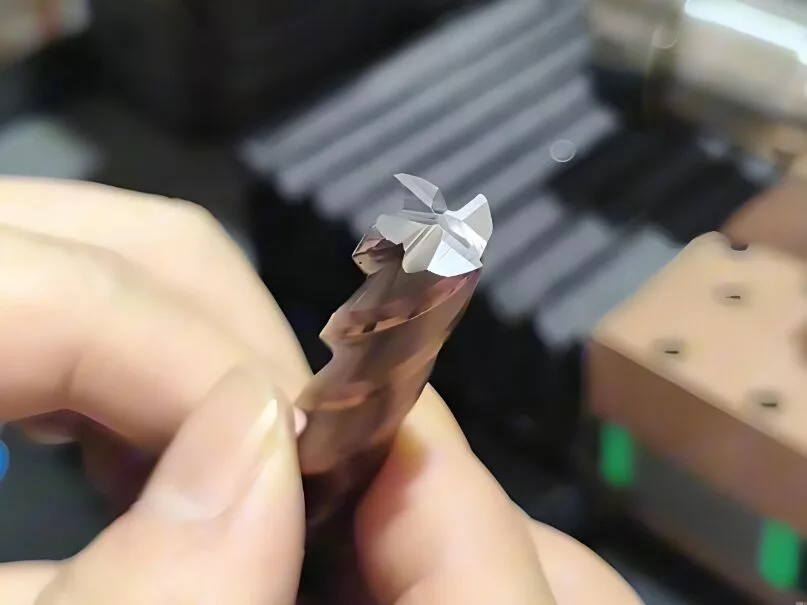Abstract
Solid carbide end mills are indispensable in modern machining, valued for their wear resistance and precision. A common question in manufacturing circles revolves around their maximum regrinding potential. This article explores the key factors influencing regrinding cycles, industry benchmarks, and best practices to optimize tool lifespan. Practical data shows that high-quality solid carbide end mills typically support 3 to 5 regrinding cycles, with performance retention exceeding 90% of new tools when processed professionally. The regrinding process not only reduces tooling costs by up to 50% but also aligns with sustainable manufacturing goals by minimizing material waste.

Introduction
In metalworking operations ranging from automotive component production to die-mold manufacturing, solid carbide end mills stand out for their ability to handle high cutting speeds and tough materials. Unlike high-speed steel tools, carbide variants leverage tungsten carbide (WC) particles bonded with cobalt (6%–12% content) to deliver exceptional durability and wear resistance . As these tools incur flank or crater wear over time, regrinding emerges as a cost-effective alternative to full replacement.
Regrinding involves restoring the tool’s original cutting geometry, removing worn material while preserving the core carbide substrate. Beyond cost savings, this practice supports sustainability by reducing the need for new carbide production—an energy-intensive process involving tungsten ore extraction . However, the number of viable regrinds is not fixed; it depends on a complex interplay of tool design, material quality, machining conditions, and regrinding techniques.
Key Factors Determining Maximum Regrinding Cycles
Tool Substrate Quality
The foundation of regrindability lies in the carbide substrate’s composition and manufacturing quality. Finer WC particle sizes enhance wear resistance, while larger particles improve toughness—both critical for withstanding multiple regrinding cycles . High-quality substrates, such as micro-grain carbide used in precision end mills, retain structural integrity even after repeated material removal.
Cobalt content (typically 6%–12%) acts as a binder for WC particles. Optimal cobalt levels balance hardness and flexibility, preventing brittle fracture during regrinding . Tools with subpar substrates—including those with uneven particle distribution or excessive porosity—may fail after just 1–2 regrinds due to internal stress accumulation.
Original Tool Geometry and Dimensions
The initial design of the end mill directly impacts regrind potential. Tools with generous material allowances in the cutting zone, such as long-neck radius end mills with sufficient flute depth, can withstand more regrinding passes . In contrast, small-diameter or thin-walled end mills have limited material to remove, reducing maximum cycles to 2–3.
Flute count and helix angle also play roles. Four-flute end mills with standard helix angles (30°–40°) maintain geometric stability better than specialized designs like high-helix (45°–60°) or non-helix variants . Each regrind removes a thin layer of material (0.01–0.03 mm per pass for carbide), so tools with larger initial cutting diameters retain usability longer .
Regrinding Process Standards
Precision regrinding is non-negotiable for maximizing cycles. Using diamond wheel grinders—essential for carbide’s extreme hardness—ensures clean, accurate material removal without damaging the substrate . Coolant application during grinding is critical: high-pressure synthetic coolants (15–20 bar) prevent overheating, which can degrade carbide integrity and cause edge burning .
Maintaining original geometric parameters (rake angles, relief angles, and edge passivation) is another key requirement. Professional regrinding services use jigs and optical measurement tools to replicate factory specifications, ensuring consistent performance across cycles . Improper techniques—such as excessive material removal or misaligned angles—can halve the number of viable regrinds.
Machining and Wear Conditions
The tool’s service history directly influences regrindability. End mills used for machining soft materials (e.g., aluminum) with moderate cutting speeds incur less severe wear, supporting more regrinds than those used for hardened steel (up to 70 HRC) or high-temperature alloys . Excessive cutting speeds (above 100 mpm for steel) accelerate crater wear, reducing the substrate’s remaining usable material .
Minor edge damage (e.g., micro-chipping) can be repaired through regrinding, but severe damage—such as cracks or chipped flutes—renders the tool unfit for further use . Regular tool inspection, ideally before wear exceeds 0.2 mm on the flank face, preserves regrind potential by minimizing the material needed for restoration .
Industry Benchmarks and Practical Guidelines
Industry data from leading manufacturers provides clear benchmarks. Kennametal, a global cutting tool specialist, reports that solid carbide end mills typically support up to 3 reconditioning cycles, with modular designs limited to 2 . Specialized high-quality end mills, such as those with silicone-based coatings or micro-grain substrates, can reach 4–5 cycles when reprocessed by certified services .
A critical threshold is the 90% performance rule: each regrind should restore at least 90% of the new tool’s cutting efficiency . When regrinding costs exceed 50% of a new tool’s price, or when geometric accuracy can no longer be maintained, replacement becomes more economical . For high-precision applications (e.g., aerospace components), limiting regrinds to 2–3 cycles ensures tight tolerance compliance.
Best Practices for Extending Regrinding Potential
- Prioritize professional regrinding services: Certified providers (such as Ceratizit or Rohit Industries) follow factory-spec processes, including recoating options that restore wear resistance .
- Implement proactive tool management: Inspect tools after 20–30 hours of use (or earlier for harsh applications) to address wear before it becomes severe .
- Control grinding parameters: Limit material removal to 0.01–0.03 mm per pass and use diamond wheels with proper grit (180–240 for finishing) .
- Match regrinds to application: Reserve reconditioned tools for non-critical tasks once they exceed 3 cycles, as edge sharpness and wear resistance gradually decline.
The maximum number of regrinds for a solid carbide end mill—typically 3 to 5—reflects a balance of substrate quality, design, regrinding precision, and service conditions. When executed correctly, regrinding delivers significant cost savings and environmental benefits without compromising machining performance. Manufacturers should view regrinding not as a last resort but as a strategic component of tool lifecycle management, leveraging professional services and proactive inspection to maximize value.
By understanding the factors that govern regrindability, shops can optimize tool budgets, reduce waste, and maintain consistent productivity—all while harnessing the full potential of their carbide end mills.


